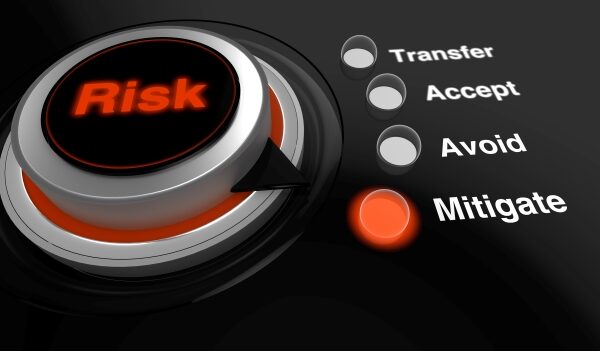
Can corporate pension managers learn from how insurance companies invest their pension-related assets?
So-called pension risk transfers (PRTs) allow corporates to negotiate with insurance companies to take on a pension plan’s liabilities and remove interest rate and longevity risk from the company’s balance sheet.
- In the US, PRT transactions totaled about $25 billion in 2020, with $14 billion of that coming in Q4, the highest quarterly volume since 2012.
- That context formed the backdrop for a recent meeting of NeuGroup for Pensions and Benefits sponsored by Insight Investment that probed how and why the asset portfolios of life insurers differ from those of typical corporates that fund pension liabilities.
- Following are takeaways from NeuGroup’s Roger Heine, who helped moderate the meeting.
Compare and contrast. Jeremy King at Insight Investment set the table by asking if it makes sense for corporate plan sponsors to invest more like insurance companies. This can facilitate on-balance sheet derisking or an eventual PRT transaction. What’s clear now is that most plans don’t invest like insurers.
- Investment in private credit instruments by insurance companies can represent 35% of the overall portfolio—much more than typical corporate pensions. Securitized debt, a very capital efficient asset class for insurers, can represent a similar amount.
- On the other hand, Tod Nasser, SVP, Investment Management at Pacific Life Insurance Co., pointed out that insurance companies typically hold far fewer equities—perhaps a 5% to 10% “sliver,” mainly to fund the longest-term liabilities.
Lay the groundwork. If PRT is the corporate pension’s end goal, then working with a small number of insurance companies well in advance of the transfer to adjust the plan’s asset mix to insurance company preferences could narrow the gap between balance sheet valuation and the price insurance companies would demand to take on the pension liabilities.
- Drawing an analogy, Alex Veroude of Insight said while you (the pension plan) might like to paint your house green, potential homebuyers (insurance companies) will likely pay more for a neutral color.
Why the big differences between insurers and pensions when the underlying annuity liabilities are essentially the same?
- Insurance companies are subject to capital charges based on risk measures: this discourages investment in equity securities, non-rated debt instruments and certain applications of derivatives. In contrast, risk taken in corporate pensions has no impact on equity capitalization and minimal impact on credit ratings.
- But several factors lead to more illiquid private investments in insurance companies than corporate pensions:
- Insurance companies have the benefit of large scale and can diversify investments across their entire general account while corporate pensions must diversify within a typically smaller pension plan.
- Because annuity liabilities are fully funded in insurance companies with minimal possibility of early withdrawals, insurance companies don’t need to worry about liquidity; corporate pensions face more volatile funded status and glidepaths that can require rebalancing trades. One member also expressed a concern about valuing illiquid private investments and the resultant challenge in managing risk.
- If the corporate wants flexibility to someday do a PRT, then liquid assets can result in a lower, better price because the insurance company will incur lower cost to replace transferred assets.
- One other significant factor is that life insurance companies tend to invest in high-quality, investment-grade (IG) private credit instruments such as illiquid corporate credit, as well more traditional private placements.
- These assets are yielding an illiquidity premium of 0.5% to 1% over comparable liquid IG corporate bond risk. Taking on this illiquidity premium makes a lot of sense to insurance companies with long-holding periods.
- By contrast, pensions that have exposure to private credit tend to be in middle-market direct lending strategies which are below investment grade or non-rated instruments structured in fund format. These are often held in a growth allocation rather than a fixed income allocation, and the hedging characteristics are often disregarded.
Yield pickup for pensions. So there are real reasons why the assets of insurance companies and corporate pensions are so different. But the meeting did highlight two areas where corporate pensions could move to more illiquid private investments to pick up yield:
- Insight presented a case study of a client company that had substantially increased its investments in private credit instruments over several years with the benefit of meaningfully increasing credit spread; but this company has no intention of ever doing a PRT. It wanted to derisk their plan on their own balance sheet, but do so by “borrowing” from the life insurance playbook.
- An investment manager at another insurer emphasized the benefit of investing in private credit instruments that the insurance companies themselves are buying, as the insurers would ultimately be happy keeping them in a PRT.
Looking ahead. Finally, it was noted that as active defined benefit plans are being superseded by defined contribution (DC) plans, such as 401 (k)s, insurance companies have stepped up efforts to offer annuity products to DC plans, facilitated by recent Federal legislation.
- Another innovation is LDI or personal bond strategies for individual investors.
- This topic will be one of several covered at the three-hour session sponsored by Investment Insight scheduled for June 22nd focused on DC plan issues.


